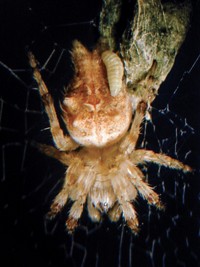Advertisement
Grab your lab coat. Let's get started
Welcome!
Welcome!
Create an account below to get 6 C&EN articles per month, receive newsletters and more - all free.
It seems this is your first time logging in online. Please enter the following information to continue.
As an ACS member you automatically get access to this site. All we need is few more details to create your reading experience.
Not you? Sign in with a different account.
Not you? Sign in with a different account.
ERROR 1
ERROR 1
ERROR 2
ERROR 2
ERROR 2
ERROR 2
ERROR 2
Password and Confirm password must match.
If you have an ACS member number, please enter it here so we can link this account to your membership. (optional)
ERROR 2
ACS values your privacy. By submitting your information, you are gaining access to C&EN and subscribing to our weekly newsletter. We use the information you provide to make your reading experience better, and we will never sell your data to third party members.
Synthesis
Snow Fleas Pack A Chemical Weapon
Chemical Ecology: Cold-weather-loving insect produces never-before-seen chlorinated natural product to deter predators
by Sarah Everts
May 21, 2015
| A version of this story appeared in
Volume 93, Issue 21
It’s easy to overlook the snow flea: The millimeter-long insect could be mistaken for a flake of pepper on a white wintery landscape. But the little organism packs some powerful chemistry. Researchers led by Stefan Schulz at the Technical University of Braunschweig, in Germany, report that the snow flea, or Ceratophysella sigillata, produces polychlorinated compounds to repel predators (Angew. Chem. Int. Ed. 2015, DOI: 10.1002/anie.201501719). The family of defense compounds, including sigillin A, is unique in that it is a new class of natural products that features a chemical scaffold that could find application in insect control.

“It’s a very surprising discovery,” comments John A. Pickett, a chemical ecologist at Rothamsted Research Station, in Harpenden, England. It’s not often that scientists find any halogens in natural products made by terrestrial organisms, he says. And “here, there’s not just one chlorine, but five chlorines.”
Despite its diminutive size, the snow flea, also called a springtail, has garnered an online fan base for some of the charming strategies it uses to evade predators: In threatening situations, the insect ejects a springing device out of its rear end to propel itself to safety. The insect also likes a party: In late winter or early spring, these bugs sometimes form huge colonies, as wide as a yard, with millions of individuals migrating together like a superorganism, devouring the algae that grow on wet, decomposing leaf litter in the melting snow, Schulz explains. Sigillin A likely helps deter predators such as spiders, centipedes, and mites from feasting on the partygoers.
Snow fleas produce a rather large amount of sigillin A—about 0.2% of their body weight—which is unusual for a natural product, especially one that “is so metabolically expensive to produce,” given its chlorine content and complicated scaffold, Pickett adds. Schulz’s team also developed a protocol for synthesizing sigillin A’s basic scaffold. The seven-step process doesn’t have a high yield, but it is enantioselective and should allow chemists to produce a variety of analogs. Analogs—if potent enough—that could find use as ant deterrents, Schulz says.
Next up, Schulz and his team will study how the snow flea produces sigillin A. The natural product might be made using the snow flea’s biosynthetic machinery. Or it might be made by a symbiotic microorganism living in or on the snow flea, perhaps by polyketide synthesis, Schulz says. Another possibility is that the insect acquires the unusual compound through its food supply and stores it for later use.







Join the conversation
Contact the reporter
Submit a Letter to the Editor for publication
Engage with us on Twitter